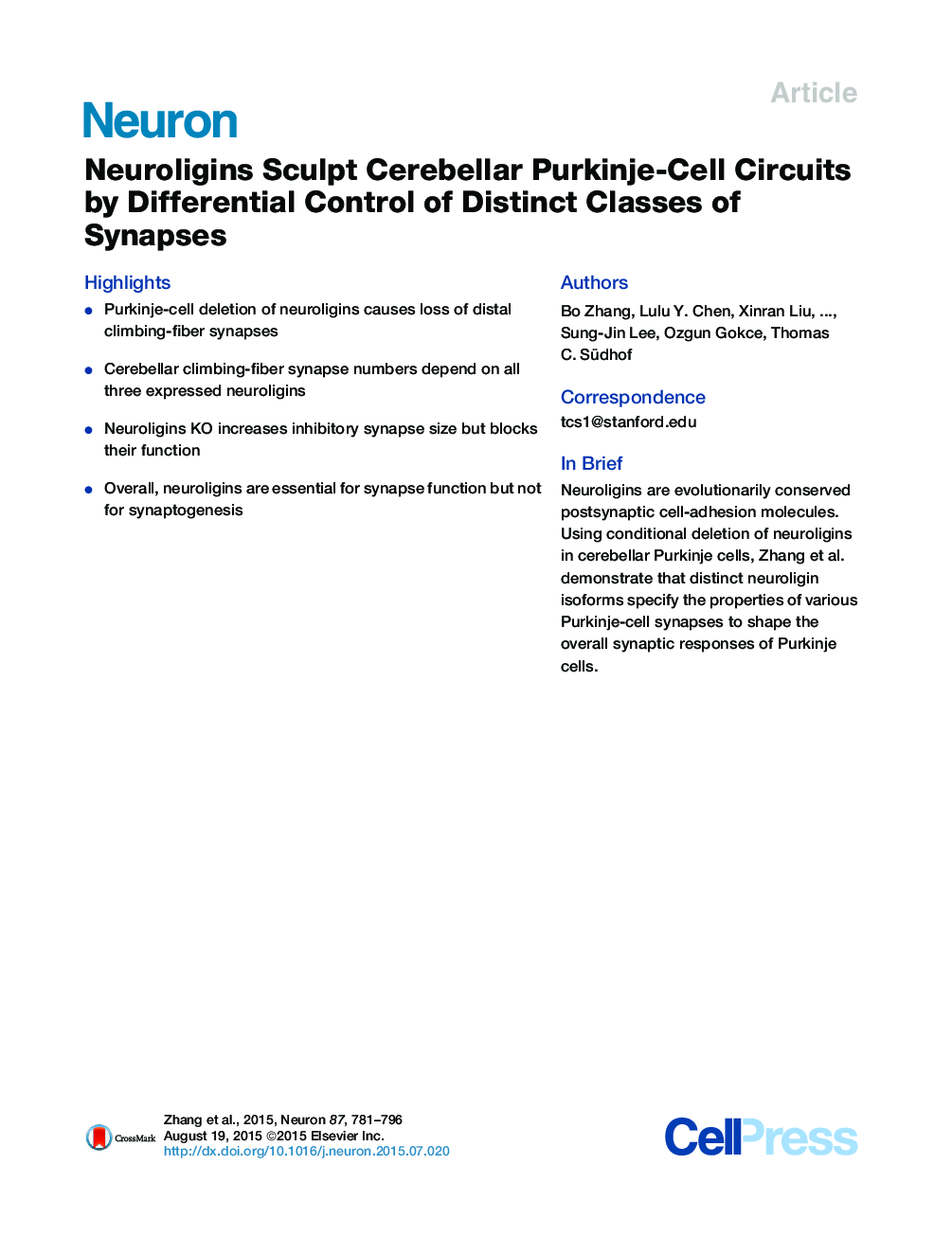| Article ID | Journal | Published Year | Pages | File Type |
|---|---|---|---|---|
| 4320821 | Neuron | 2015 | 16 Pages |
•Purkinje-cell deletion of neuroligins causes loss of distal climbing-fiber synapses•Cerebellar climbing-fiber synapse numbers depend on all three expressed neuroligins•Neuroligins KO increases inhibitory synapse size but blocks their function•Overall, neuroligins are essential for synapse function but not for synaptogenesis
SummaryNeuroligins are postsynaptic cell-adhesion molecules that bind presynaptic neurexins and are genetically linked to autism. Neuroligins are proposed to organize synaptogenesis and/or synaptic transmission, but no systematic analysis of neuroligins in a defined circuit is available. Here, we show that conditional deletion of all neuroligins in cerebellar Purkinje cells caused loss of distal climbing-fiber synapses and weakened climbing-fiber but not parallel-fiber synapses, consistent with alternative use of neuroligins and cerebellins as neurexin ligands for the excitatory climbing-fiber versus parallel-fiber synapses. Moreover, deletion of neuroligins increased the size of inhibitory basket/stellate-cell synapses but simultaneously severely impaired their function. Multiple neuroligin isoforms differentially contributed to climbing-fiber and basket/stellate-cell synapse functions, such that inhibitory synapse-specific neuroligin-2 was unexpectedly essential for maintaining normal climbing-fiber synapse numbers. Using systematic analyses of all neuroligins in a defined neural circuit, our data thus show that neuroligins differentially contribute to various Purkinje-cell synapses in the cerebellum in vivo.
